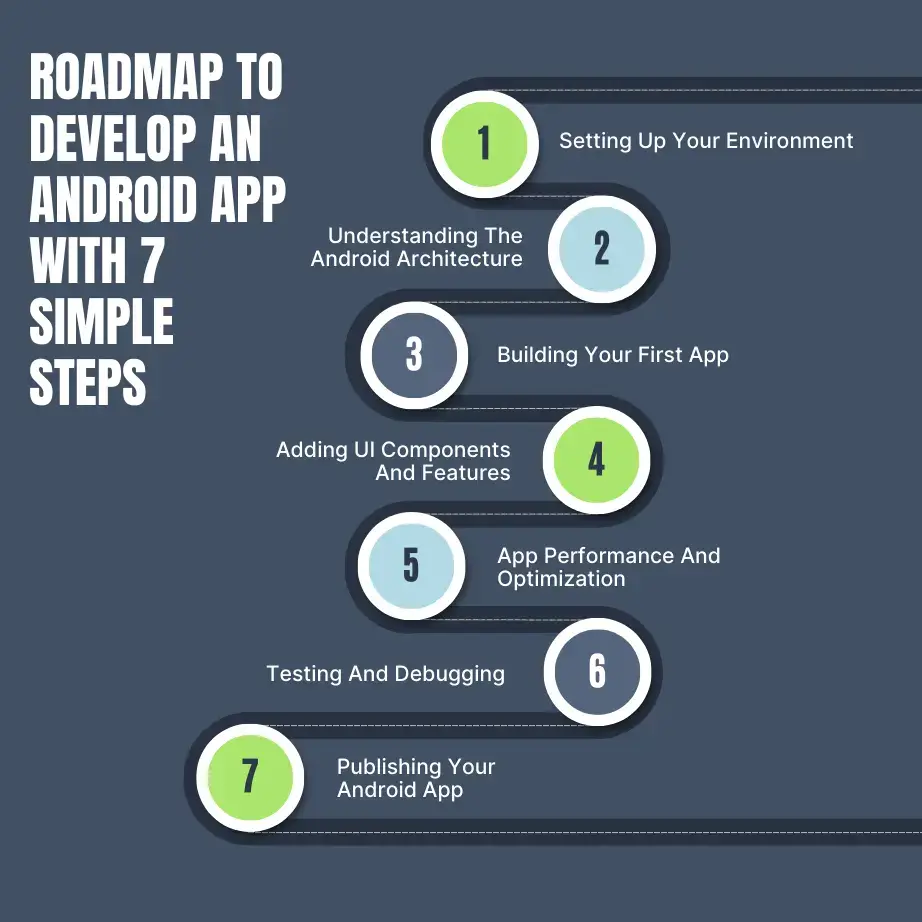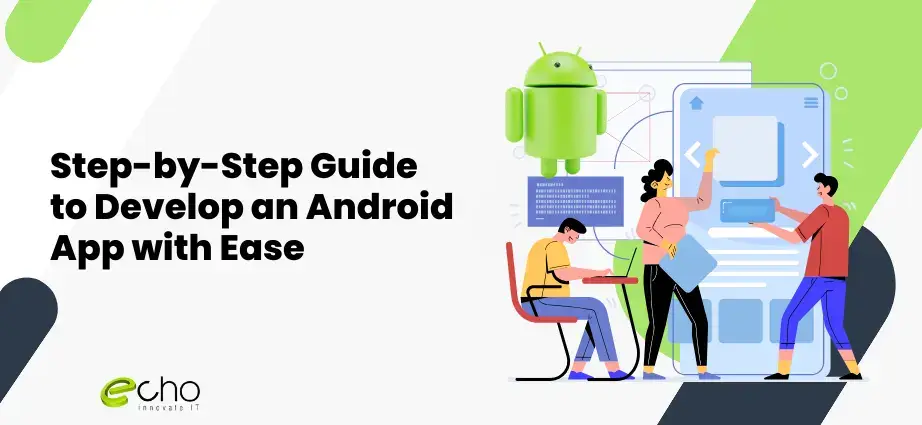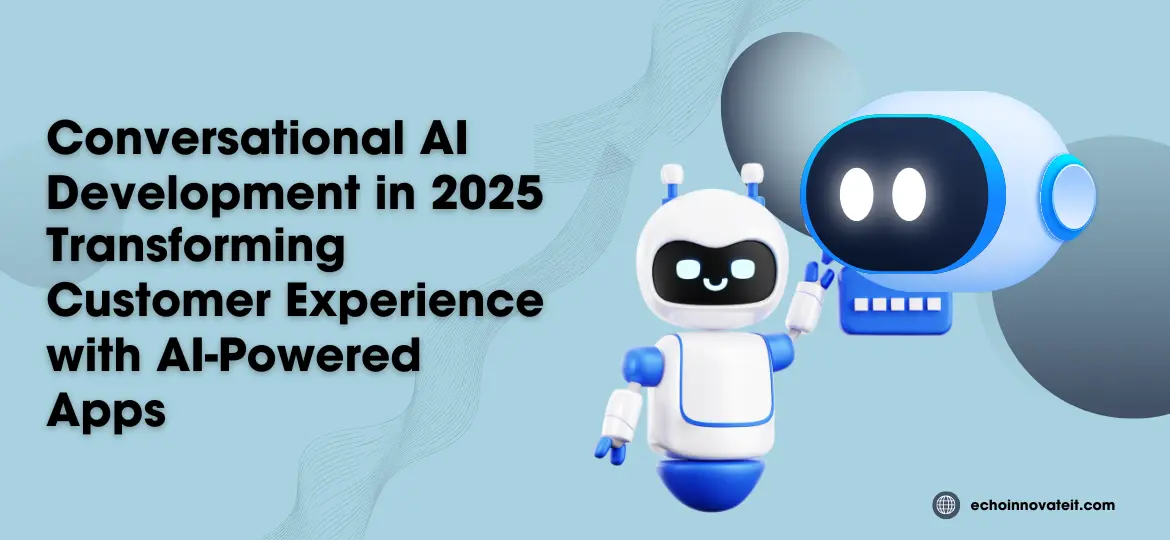If you’ve always wanted your own mobile app but aren’t sure where to start, this guide is for you. Whether you’re interested in Android and Apple app development, it’s crucial to understand the core steps. Today’s blog offers a detailed roadmap to quickly build your Android app, whether you’re using Java or Kotlin. We’ll guide you through every phase, no matter your coding experience.
Android software development has become integral to our daily lives. From productivity to communication and commerce, there’s an app for everything. With millions of Android smartphones in use, your app could reach billions worldwide.
This article breaks down the Android app dev process into easy-to-follow steps. We’ll cover everything from setting up your development environment to launching your app on the Google Play Store.
Let’s dive in and turn your app idea into a finished product!
Advantages of developing an Android App for your business
If you have already decided to develop an Android app, you must know how it can be a game-changer for your business. Stating some facts, Android is at the top of mobile operating systems, covering 71% of the market share worldwide, more than iOS, Samsung, and other mobile OS available.
Do you know why? This is due to its better accessibility, higher customization according to user preferences, integrated Google’s ecosystem, continuous user interface improvement, and vast collaboration with hardware manufacturers. Developing an Android app from a reliable mobile app development company has countless advantages. Some of them are mentioned below:
Broad Market Presence
With Android controlling a sizable chunk of the worldwide smartphone market, your app will reach a wider audience. You may get a diversified consumer base by offering Android devices, which appeal to a wide range of people with varying budgets and preferences.
Reduced Development Costs
Since Android is open-source, development costs are frequently less than iOS. Many free development tools and resources are accessible to create Android apps.
Increased Interaction with Customers
Businesses may communicate directly with customers using apps that offer individualized experiences and fast updates. Apps can increase consumer happiness and loyalty by efficiently catering to their wants and preferences.
Enhanced Awareness of the Brand
App store optimization (ASO) can increase your app’s exposure and download count. An attractive app enhances your brand image and strengthens your brand identification.
Competitive Advantage
A mobile app can help differentiate your company from rivals and offer a unique selling offer. Utilizing the newest mobile technologies, you can launch cutting-edge goods or services.
Gathering and Examining Data
You can better understand consumer behavior and preferences using the valuable user data that apps can gather. Analyzing this data, you may optimize your marketing efforts and make well-informed business decisions.
Enhanced Efficiency in Operations
Apps can increase productivity by streamlining corporate procedures and automating chores. Give workers mobile access to essential tools and information.
Feedback from Clients
Users of apps have a platform to express their opinions and recommendations. You can constantly improve your software and services by listening to what users say.
Roadmap To Develop With 7 Simple Steps

So, you have decided to develop an Android App for your business. But how? Developing a mobile application requires meticulous attention to details like your app’s stack of technology needed, look and feel, total budget, and marketing strategies. Half the project is done if you are hiring a competitive development team for your Android project and looking for a top Android app development company in USA. Connect with us!
Setting Up Your Environment
The operating system you choose significantly impacts your workflow, so it’s essential to assess your preferences and familiarity. While Windows, macOS, and Linux are all viable options, Windows and macOS offer a more streamlined experience due to their extensive support and compatibility with Android Studio. Once you’ve selected your operating system, the next crucial step in Java Android app development is installing Android Studio, the official integrated development environment (IDE) for creating Android apps. Android Studio provides comprehensive tools and features for how to build Android applications, including a visual layout editor, code editor, emulator, and support for the Android SDK.
To run and test your Android apps, you’ll need a smartphone or an emulator. While a physical Android smartphone offers a more realistic testing environment, emulators are often more convenient for development. They simulate various Android devices and configurations, enabling you to test your app across different screen sizes, resolutions, and operating systems. Lastly, gaining a solid understanding of the Android Software Development Kit (SDK) is crucial. Familiarizing yourself with the SDK’s components will streamline your development process and help you build Android applications more effectively.
Understanding The Android Architecture:
Android has a layered architecture to isolate distinct functionalities and enhance modularity. This architecture is composed of four primary layers:
- Applications: This layer contains the apps that users interact with, including system and third-party apps. Each app runs in its sandbox, with restricted access to system resources.
- App Frameworks: This layer contains APIs that enable apps to communicate with the underlying system. Its components include Activities, Services, Content Providers, and Broadcast Receivers.
- Android Runtime: This layer executes Dalvik bytecode (or ART in subsequent Android versions). It also includes essential libraries for standard functionality.
- Linux Kernel: The Linux kernel is the bottom layer, providing critical system services such as memory management, process scheduling, and network connection.
This layered architecture guarantees a stable and scalable platform, facilitating app creation and updates. Understanding these levels enables developers to use Android’s features and produce high-quality apps efficiently.
Building Your First App:
You’ll be using XML layout files to design the user interface for your application. These files specify the layout and appearance of your app’s screens. You can construct your layout using Android Studio’s visual layout editor or manually write XML code. You can add functionality to your project by writing code in either Java or Kotlin.
This code will manage user interactions, calculations, and device features.
After designing your layout and adding the appropriate code, you may test your app on an emulator or device. Android Studio has an emulator that simulates various Android devices and setups. Alternatively, you can connect a physical Android device to your computer and execute your program.
Adding UI Components And Features:
A well-designed user interface (UI) is essential for any successful Android app. It should be visually beautiful and easy to browse. When building your UI, you’ll use a variety of UI components to display information and let users interact with it.
Standard components include buttons, text views, pictures, checkboxes, radio buttons, and more. Select the relevant components based on the type of content to display and the desired user engagement.
Responsive design ensures your app appears fantastic on all screen sizes and orientations. This entails creating flexible layouts and tailoring your app’s UI to multiple screen sizes. You can use techniques such as ConstraintLayout and responsive design to develop apps that give a consistent and engaging experience across various devices.
App Performance And Optimization:
Developing a high-performing Android app is critical for delivering a great user experience. Optimization entails increasing your app’s speed, responsiveness, and efficiency.
To improve app speed, prioritize minimizing needless operations, optimizing code, and implementing efficient data structures. Avoid doing heavy operations on the main thread, which can cause UI freezes. Instead, use AsyncTask or Coroutine to offload time-consuming operations to background threads.
Screen size, resolution, and hardware capabilities should all be considered while optimizing your app for various devices. Use responsive design concepts to ensure your app adjusts to different screen sizes and orientations. Test your app on multiple devices to find and resolve performance issues.
Testing And Debugging:
Thorough testing is required to verify the quality and stability of your Android app. It assists in identifying and correcting faults early in the development process, preventing problems from reaching your users. Android Studio has solid debugging tools to help you find and repair bugs in your code.
You can use breakpoints, step through code, check variables, and see call stacks. These tools are handy for diagnosing complex bugs and understanding the flow of your app’s execution.
Null pointer exceptions, resource issues, and performance issues are common faults in Android development. You may identify and correct these mistakes before they affect your users by designing thorough tests and successfully employing debugging techniques.
Publishing Your Android App:
Once you’ve finished developing and testing your app, it’s time to put it on the Google Play Store. To do so, you’ll need to register a developer account. The process entails supplying personal information and payment information and accepting Google Play’s terms and conditions.
Before submitting your app, ensure it fits all of the Google Play Store’s standards and guidelines. This includes having a clear and comprehensive app description, high-quality screenshots, and suitable category and content ratings. Check Google Play’s policies carefully to prevent rejection.
Once your app is complete, submit it for evaluation. The review process may take several days, during which Google Play’s team will evaluate your app’s adherence to its policies and guidelines. If your app is approved, it will be listed on the Google Play Store and available for download by users.
Remember to keep track of your app’s performance even after it’s been published. Pay attention to user comments, ratings, and reviews. To ensure a great user experience, resolve any faults or bugs immediately.
Conclusion
Wrapping up today’s comprehensive guide on Android App development, we are sure you must have a basic idea of the entire process. Remember that learning Android app development is a continuous process. There are constantly new tools, technologies, and best practices to learn. You may create creative and lucrative apps by hiring the right team of developers. So what are you waiting for? Begin building your dream app today!
Echoinnovate IT is a reputed custom app development company that has provided various IT services for the past twelve years. Let’s discuss your project and discover how we can help you reach your business goals.
Hire our Android App Developers today, or contact us to get started!



